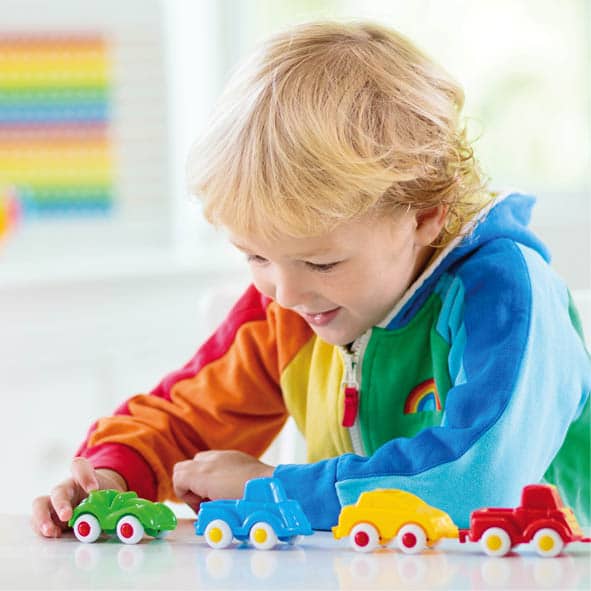And how they shape your child’s play!

Has your child ever shown behaviours that you find a bit puzzling or unusual like lining up their toys in a row, going upside down and looking through their legs, repeatedly throwing an object or continuously spinning the wheels on a toy car?
One concept that can provide insight into these types of play and many others is “schemas.” Understanding what schemas are, how to recognise them through your child’s behaviour, and when they typically manifest can help you navigate these phases and offer your child appropriate toys to effectively explore their current schema.
In this blog post, we will explore the fascinating world of schemas!
So, what are schemas?
Schemas are foundational building blocks of cognitive development in children. They are recurring patterns of behaviour and thought that reflect a child’s efforts to make sense of the world around them. These patterns help children organise information, solve problems, and develop a deeper understanding of their environment.
Schemas can manifest in various forms, such as repeated actions, interests, or questions, and they are vital to your child’s learning and development.
Recognising schemas in your child’s behaviour
Recognising schemas in your child’s behaviour can provide insight into their cognitive development and interests. Here are some common schemas and how you can identify them:
Transportation Schema: Children displaying this schema may exhibit a fascination with vehicles, constantly playing with toy cars, trains, or airplanes. They may create imaginary roads or tracks and enjoy pushing, pulling, or rolling objects around.
Enveloping Schema: Children with an enveloping schema often love to hide objects, themselves, or even you under blankets, pillows, or clothing. They are exploring the concept of containment and concealment.
Rotational Schema: Children exhibiting a rotational schema have a penchant for twisting, turning, and spinning objects. They may enjoy activities like spinning tops, stirring liquids, or even twirling around themselves!
Connecting schema: This schema involves children’s fascination with joining things together, such as building elaborate block towers, linking LEGO bricks, or creating intricate paper chains.
Transforming schema: Children experiencing this schema enjoy transforming objects or materials. They might mix colours, shape playdough, or build sandcastles and then take delight in changing their creations repeatedly.
Trajectory schema: Children interested in this schema love exploring the paths objects take when thrown, dropped, or rolled. They might repeatedly drop items from high surfaces or experiment with different angles and distances.
When do children generally display schemas?
Schemas typically emerge during specific developmental stages, and their duration can vary from child to child.
Transportation, Enveloping, and Rotational schemas often appear in toddlers aged 18 months to 3 years.
Connecting and Transforming schemas tend to be prevalent between ages 2 and 4.
Trajectory schema usually emerges around 2 to 4 years of age.
Understanding these developmental stages can help you provide appropriate toys, activities, and guidance to support your child’s schema-driven exploration. They are fascinating to watch too!
Is your child currently experiencing a schema? Which one do you think they’re in?
